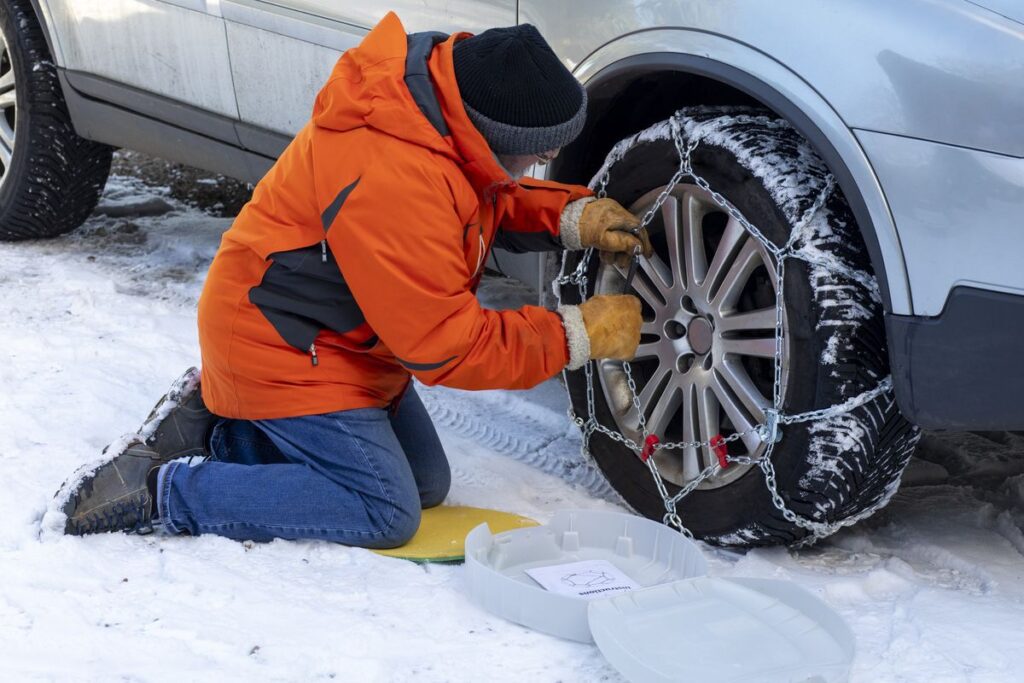
When using Snow chains
- Ensure you have the right size chains for your tires. Failure to choose the right chains could damage your tires, chains, or even your vehicle. It could also impair your driving in what are already difficult conditions. All you need to find the right-sized tire chain is the size of your tire. If you need help finding your tire size, this article will help you out.
- Take the time to practice putting them on and off at home, and learn how to tighten them if needed. This will save time and effort when you need to put them on later.
- Only put chains on when necessary. Don’t put them on prematurely, just in case, or because you expect bad weather down the road. This will damage the chains before you actually need to use them.
- Be aware that driving with chains is different than driving with ‘bare’ tires. It is not recommended to go over 30 mph with tire chains installed. Accelerate and brake slowly, giving yourself plenty of time. Avoid anything that could damage or compromise the chains such as hitting the curb, locking the wheels, driving on roads that have no snow or ice on them, or spinning your tires.
- If the chains become loose or break during your journey be sure to stop right away to fix them. If you continue on chains in this condition, you could damage your tires or vehicle and your driving could be compromised.
- Research shows that tire chains improve safety and performance and are better than regular tires, or even all-weather/snow tires but only if used correctly. Understand that over-steer can occur if chains are put on the front wheel of a front-wheel drive vehicle, and under-steer if chains are put on the back wheels of a rear-wheel drive vehicle. If you have a 4-wheel or all-wheel drive vehicle chains should be put on all 4 wheels.
Plan Ahead
- Check the weather before you leave to have an idea of when and where the weather may become an issue.
- Have an emergency kit with you in case you get stuck.
- Let people know the route you will be taking, and your estimated arrival time.
During the Journey
- Clear all existing snow and ice from your vehicle before driving. Stop frequently, if needed, to brush accumulating snow off of the vehicle.
- Keep your headlights on in poor visibility. Low beams usually work best during blowing snow.
- Remember the speed limit listed is for ideal conditions. As weather conditions deteriorate, slow down accordingly.
- Be sure to accelerate and brake slowly. Hitting either pedal too hard/fast can result in your vehicle being out of control. Give yourself extra time to slow down when turning or coming to a stop.
- Do not use cruise control when snow and/or ice is possible on roadways.
- Keep an eye out for random patches of ice or worse conditions. Exit ramps especially can build ice quickly.
- When driving a 4×4, remember they tend to be heavier and will take longer to stop. Many people are overconfident in the ability to keep traction in these vehicles.
If you still have questions about tire chains, be sure to visit our Help Center.
